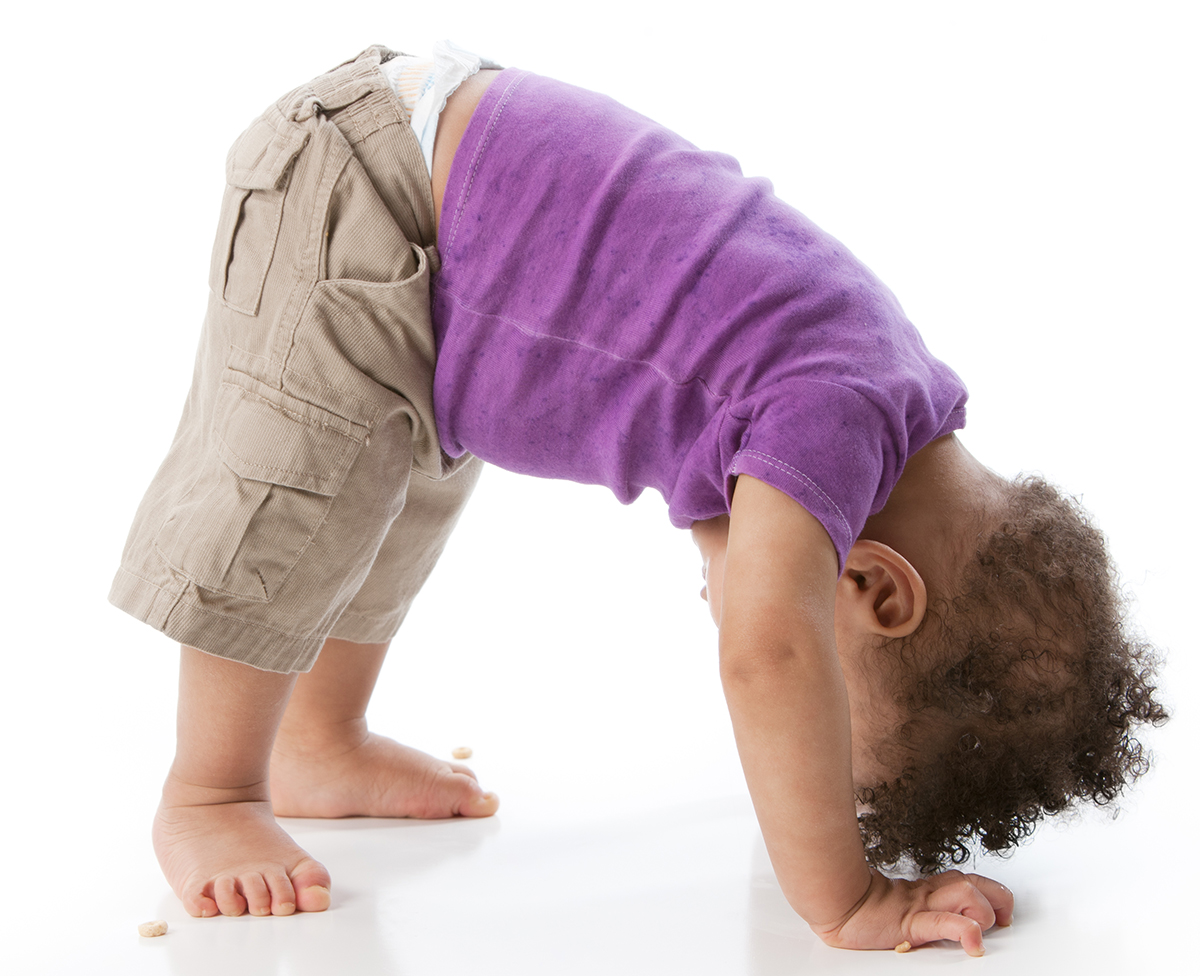Posted: November 16, 2018
At Pennsylvania’s Early Childhood Education Summit this fall, about thirty infant-toddler practitioners gathered to discuss and problem-solve around the challenges of helping infants and toddlers transition successfully from one part of their day to another. Recognizing that the youngest children need support with skills like diapering, pottying, handwashing, and putting on coats and shoes, the group brainstormed what to do during the “waiting time” to keep the other children who are ready to go outside or start a new experience engaged.

While waiting to go inside, sing songs with motions to engage children’s bodies and minds.
Waiting times can be transformed into meaningful times by prompting in-place movements that challenge the children with just-right developmental tasks. Knowing a child's capabilities and next areas for growth, the teacher can prompt children to practice patterns through movements or reinforce body parts' terms. The teacher can give young children opportunities to practice cross-lateral movements, improving their coordination and building important brain connections--all through in-place movements.
The environment rating scales, used by many programs to measure quality, set an expectation that wait times in early care settings should not be more than three minutes without meaningful activity. When done well, in-place movements are meaningful to children and adults.
In-place movements can be done sitting down or standing. Some are as subtle as blinking eyes and counting. Others are very active like spinning in a circle on your bottom or back. Here are some of the ideas that the infant-toddler professionals suggested as fun ways to redeem waiting times:
Small movements
- Emotion faces (show me "sad, excited, surprised, etc.")
- One, two, peek-a-boo!
- Give yourself a hug
- Pat the floor, legs, wall (use patterns or count or sing to "Row, row, row your boat")
- Rub legs, belly, hands
- Pretend to play an instrument (drum, flute, trumpet)
- Walk pretend finger spiders up your own arm or leg
- Cross and uncross arms or feet
- Be a bobble head
- Make the sign and sound for an animal
- Stand on one foot
- Stretch and "touch the sky"
More challenging and active
- Circle arms, flap arms, "swim"
- Twist
- Shoulder rolls, crunches
- Jump, hop, hop (in place) like a frog
- High kicks
- Jumping jacks
 Yoga poses
Yoga poses- Wall sitting (up and down) or pushing
- Bicycling legs
- Running, marching, or tip-toeing in place (stop and go on command)
- Rocket blastoff (crouch down, count, and jump)
- Sit-ups and push-ups
- Back bends
- Wobble (sit on bottom, wrap arms around knees, try to stay upright)
Break out the songs with movements
- Baby shark
- Tooty-Ta
- Bumping up and down in my little red wagon
- Hokey Pokey
Other traditional options include
- Follow the leader (Simon says, "You do, I do")
Once the brainstorming was in full force, the group came up with things like being pretend windshield wipers with arms while standing obediently by a wall (picture snow angels standing up). There is no end to the possibilities for prompts, and each one can engage a toddler's mind and body, making the transition time a fun, purposeful learning time. Some childcare experts build even more instruction into their transition ideas. For instance, if children are learning handwashing and drying, one teacher can sit with the "waiting group" and practice giving each of them ONE paper towel, "we only use one towel to dry our hands." Then invite the child to take a towel, pretend to dry his hands, then toss the towel in a wastebasket. After the practice, that child is dismissed to the bathroom to do that skill "for real" (Stewart 2017).
Be intentional, plan ahead, and select movements appropriate for the children in your care. If there is only one staff person in the room, these prompts can be called to a waiting group from a diaper changing table or sink.
Can you imagine if the professional were actively engaged with these movements, too? Improved fitness, reduced stress, more laughter, and higher job satisfaction. What's keeping you from trying these ideas? Put one in your lesson plan for today!
Want more ideas and strategies to ease transition time stress? Access these resources from Better Kid Care:
- In-place movements for infants and toddlers (handout)
- Transition strategies for infants and toddlers (video)
References
- Environment Rating Scales--assessment instruments for early childhood and child care program quality: Early Childhood, Infant/Toddler, Family Child Care, and School-Age Care
- Stewart, Deborah J. 2017. "Transition Tips! For the preschool classroom: Ten tips to dealing with those troubling transitions." Teach Preschool.

